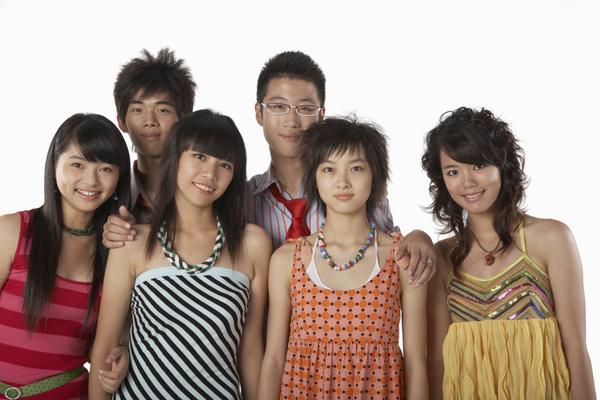Growing Numbers Of Chinese Teens Are Coming To America For High School
In a high school theater in Arcadia, Calif., Amber Zhang and the rest of the teenage cast of a production of Molière’s comedic play The Miser gather in a tight circle.
“Everyone say, ‘Hey, hey, hey!’ ” bellows Xochitl-Julisa Bermejo, an instructor at Arroyo Pacific Academy. “Helloooo!”
Zhang, cast as a spunky ingénue, throws her body — and pipes — into the exercise.
“In China, if we have class, for sure we sit down on a chair,” says Zhang, 17, who grew up in Guangzhou. She’s an only child whose parents, both doctors, sent her to the U.S. for high school. Back home, there was “not a lot of time to have fun like this.”
Zhang belongs to a growing population of Chinese teens leaving the test-driven, high-pressure world of schools back home for the U.S. — more than 23,000 at last count, according to the Institute of International Education. Their goal is to better their children’s chances of getting into an American college; a degree earned in the U.S. carries a lot of weight.
At the same time, these students — often called “parachute kids” — enjoy the looser contours of an American education, one that students like Zhang say lets them be more creative and independent.
It’s a trend that immigrants from Hong Kong, Taiwan and Korea popularized in the 1980s. The numbers of students from China have grown fast because of the sheer size of its population and the rise of a wealthy class buoyed by years of economic growth.
So many high schoolers have come that they’ve helped to tilt the overall age of Chinese immigrants in the U.S. downward, according to the Census Bureau. Among the age groups of Chinese immigrants seeing the biggest growth was the 15 to 19 crowd.
Many live with host families and attend private schools like Arroyo Pacific. U.S. immigration law gives them little choice: International students can attend public schools for only one year and must reimburse the school district.
California is a top destination for these students, and the Los Angeles suburbs in the San Gabriel Valley, home to one of the world’s largest Chinese diasporas, are particularly popular. That’s where Arroyo Pacific is located. During lunch, the sound of Mandarin fills the hallways, with accents originating from all over China — Beijing, Shanghai, Guangzhou. In a matter of six years, Chinese students have transformed Arroyo Pacific’s student body. Where there were just a handful of Chinese students before, the school is now more than 70 percent Chinese, said Robert Nguyen, the school’s director of admissions. He said many students are learning about the school by word-of-mouth.
“Being a small school with small class sizes, we can pretty much tailor our program to suit the students pretty well,” Nguyen says.
Students here work hard, going to teachers after school, or hopping into an Uber to study at the nearby Starbucks with friends. But they say the workload is considerably more manageable than in China, where high schoolers are expected to prepare for China’s national college-entrance exam gaokao, which means “high test.” It’s given just once a year and takes nine hours to complete. Senior Jesse Chou said when he was in China, he used to stay at school until 10 p.m. doing test prep. Failure was not an option.
“That means your life is done. Most people think that,” Chou says. Now, he has free time to go skateboarding.
